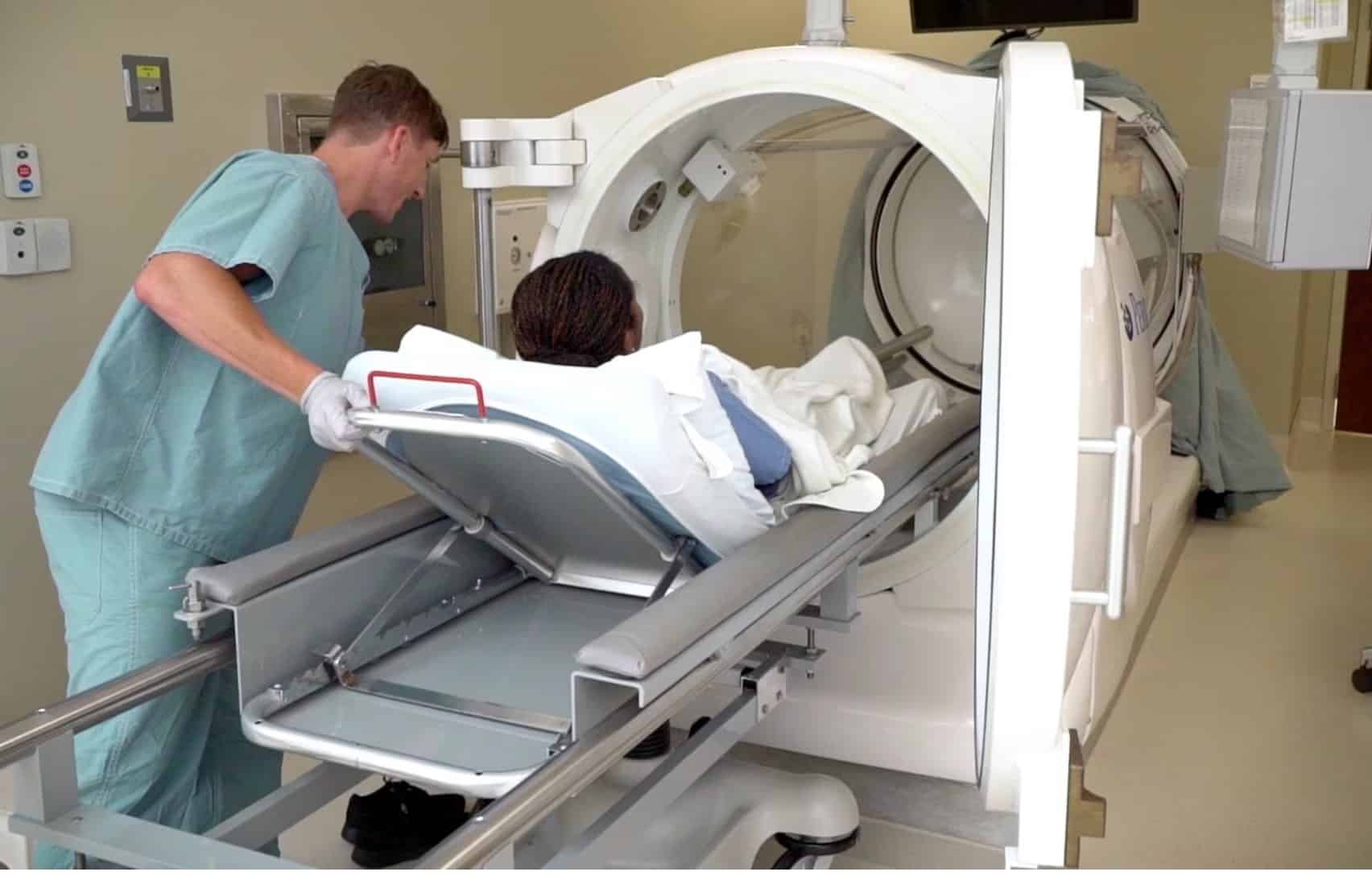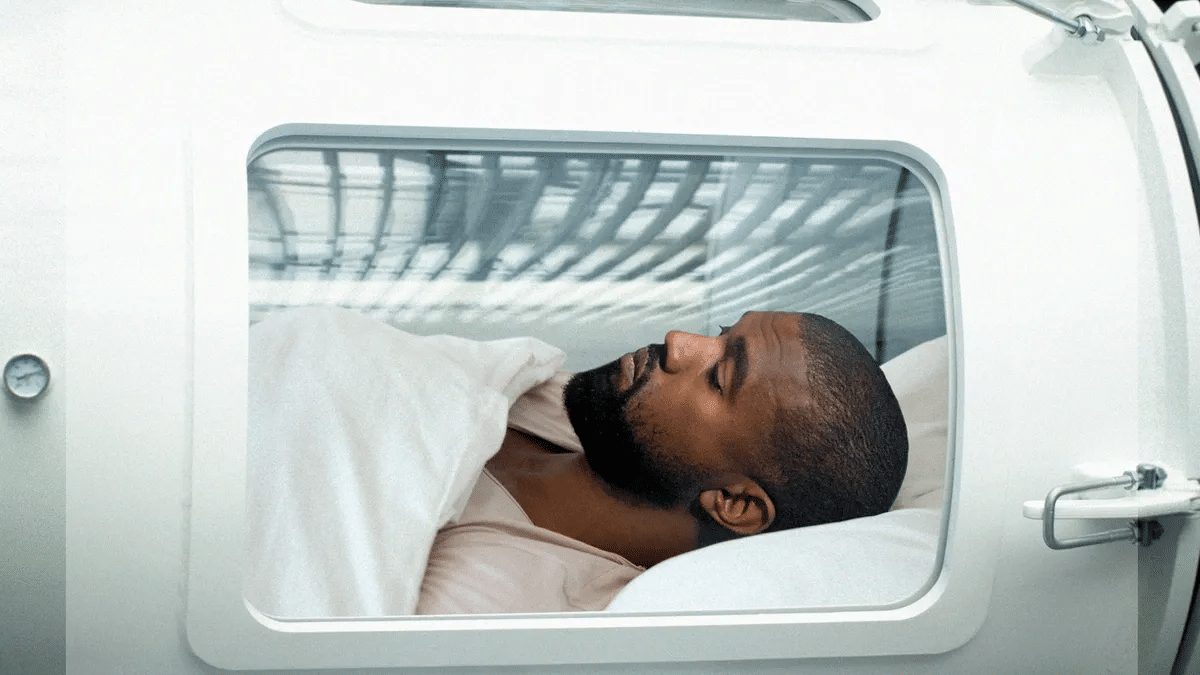Breathing in the air at an increased pressure 2 to 3 times higher than the normal atmospheric pressure is implicated in treating several health conditions. That’s what a hyperbaric chamber does for humans. Please find out more as we understand pressure chamber therapy.
A hyperbaric chamber is a medical equipment that utilizes increased pressure to deliver oxygen to the body’s tissues, promoting healing and treating various medical conditions. Hyperbaric chambers have been used for several decades and have gained popularity due to their effectiveness in treating many health conditions.
This blog post aims to provide a comprehensive guide to hyperbaric chambers for humans, including their history, function, benefits and uses. We will also explore the different types of hyperbaric chambers, the pressure levels used, and the duration of the therapy. Finally, we will discuss the emerging use of pressure chambers for sleeping and their benefits.
A hyperbaric chamber is a sealed chamber that can be pressurized to levels higher than the standard atmospheric pressure. This increased pressure allows the body to absorb more oxygen, promoting healing and aiding in treating various medical conditions.

Oxygen hyperbaric chambers have been used since the late 1800s to treat decompression sickness in divers. In the early 1900s, they were used to treat infections and wounds but fell out of favor with the advent of antibiotics.
In the 1960s, interest in hyperbaric oxygen therapy was renewed with the discovery of its benefits in treating carbon monoxide poisoning. Since then, the use of hyperbaric chambers has expanded to treat various medical conditions.
These two main types of hyperbaric chambers:
Oxygenark monoplace chambers are designed for a single patient and are typically cylindrical. Multiplace chambers can accommodate multiple patients and medical personnel and generally are larger and more complex.
There are also portable hyperbaric chambers that can be used in remote locations or emergencies.
Atmospheric pressure is the pressure exerted by the weight of the Earth’s atmosphere. At sea level, atmospheric pressure is approximately 14.7 pounds per square inch (psi), or 1 atmosphere absolute (ATA).
The pressure levels used in hyperbaric chambers vary depending on the purpose of the treatment. The most common pressures in hyperbaric oxygen therapy are 1.3 ATA (atmospheres absolute) and 2.0 ATA. The pressure levels can also range from mild, moderate, to high-pressure hyperbaric chambers.
Hyperbaric pressure is typically measured in ATA, a unit of pressure equal to the pressure at sea level. For example, a pressure of 2 ATA in a hyperbaric chamber is twice the normal atmospheric pressure at sea level.
Hyperbaric pressure is exerted in a hyperbaric chamber and is typically measured in ATA. In a hyperbaric chamber, the pressure can range from 1.3 ATA to 3 ATA or higher in some cases. This is significantly higher than the normal atmospheric pressure of 1 ATA.
A hyperbaric chamber provides a controlled environment where the pressure can be increased to a level that allows more oxygen absorption by the body, which won’t occur at normal atmospheric pressure. This increased oxygen delivery can help promote healing and tissue regeneration in various medical conditions.
Hyperbaric oxygen therapy works by increasing the amount of oxygen dissolved in the blood and tissues, which can help reduce inflammation, promote the growth of new blood vessels, and improve wound healing.
Additionally, the increased pressure in the hyperbaric chamber can help reduce the size of gas bubbles forming in the blood and tissues, which is beneficial in treating conditions such as decompression sickness.
Hyperbaric oxygen therapy is effective in the treatment of a wide range of medical conditions, including;
Additionally, it has been shown to have anti-inflammatory effects, which may make it helpful in treating autoimmune diseases and other conditions involving chronic inflammation.
Mild hyperbaric chambers typically operate at pressures between 1.3 and 1.5 ATA. They are usually soft-shelled, portable chambers that accommodate one or two people at a time. They are commonly used for conditions that do not require high-pressure oxygen therapy.
Moderate hyperbaric chambers usually operate at pressures between 1.5 and 2.0 ATA. They are primarily used in hospitals, clinics, and specialized centers to treat various medical conditions.
High-pressure hyperbaric chambers can operate at pressures up to 6 ATA. They are used in specialized medical centers to treat decompression sickness and carbon monoxide poisoning.
The safety considerations for hyperbaric oxygen therapy depend on the pressure level used in the chamber. Mild hyperbaric chambers have few risks and are generally considered safe. However, high-pressure chambers require specialized equipment and medical personnel to ensure patient safety.
Hyperbaric oxygen therapy has been used to treat a wide range of medical conditions, including:
The effectiveness of hyperbaric oxygen therapy varies depending on the condition being treated. Some diseases, such as decompression sickness and carbon monoxide poisoning, have been shown to respond well to hyperbaric oxygen therapy.
Other conditions, such as non-healing wounds and diabetic ulcers, may require multiple treatments over a more extended period to achieve significant results.
Researchers are exploring the potential use of hyperbaric oxygen therapy for a range of conditions, including:
While research is ongoing, hyperbaric oxygen therapy is not yet considered a standard treatment for these conditions.
The treatment protocol for hyperbaric oxygen therapy depends on the condition being treated. Generally, treatments last around 90 minutes and are administered five days a week for four to six weeks. Some diseases, such as carbon monoxide poisoning, may require fewer treatments.
Each hyperbaric oxygen therapy session typically lasts between 60 and 90 minutes, depending on the treated condition.
The frequency of hyperbaric oxygen therapy sessions varies depending on the treated condition. Generally, treatments are administered five days a week for four to six weeks.

Some hyperbaric pressure chambers are equipped with features to make them more comfortable and conducive for patients to sleep while receiving treatment. Features such as a bed or reclining chair, air conditioning, and soundproofing make patients comfortable inside a chamber.
There are several potential benefits to using a pressure chamber for sleeping.
Pressure chambers are just one of many sleep aids available on the market. Other common sleep aids include;
While pressure chambers for sleeping may not be the right choice for everyone, they offer unique potential benefits that make them a good option for some individuals.
If you are searching for a hyperbaric chamber for human use near your location, some tips can help you.
When choosing a human hyperbaric chamber location, several factors should be considered.
Some popular human hyperbaric chamber locations around the world include
These facilities have experience treating various conditions with hyperbaric oxygen therapy and are equipped with state-of-the-art equipment and experienced staff.
Oxygenark hyperbaric chambers for humans offer a range of potential medical benefits, particularly in the form of hyperbaric oxygen therapy. From treating chronic wounds to alleviating symptoms of neurological conditions, hyperbaric chambers have shown promise in various applications.
However, it is essential to note that hyperbaric therapy should always be conducted under the guidance of a trained medical professional and that only some are good candidates for this type of treatment.
Get in touch with us and unlock your full well-being potential!
The OxygenArk team is here to assist you every step of the way.